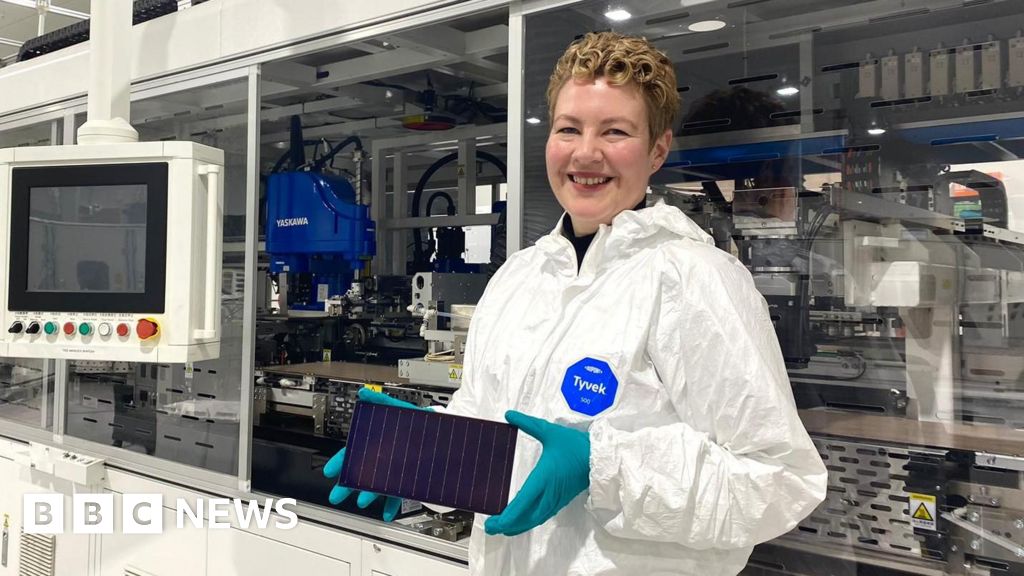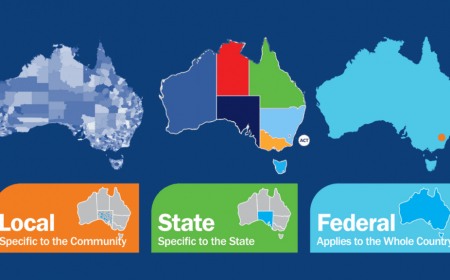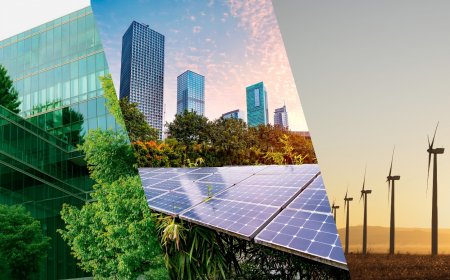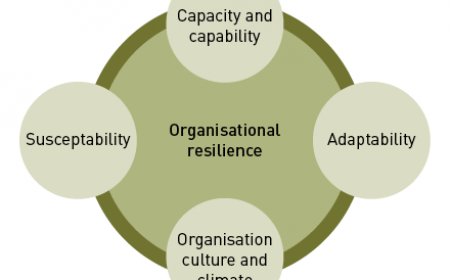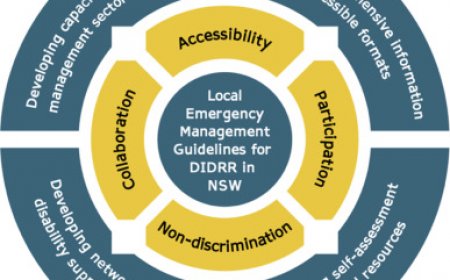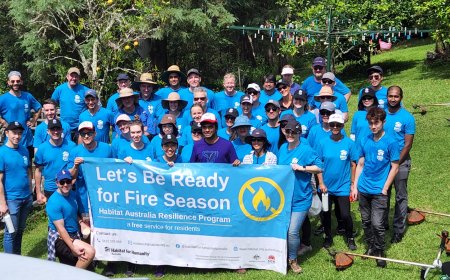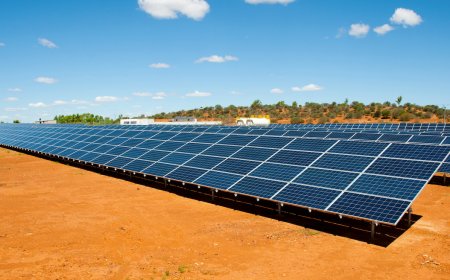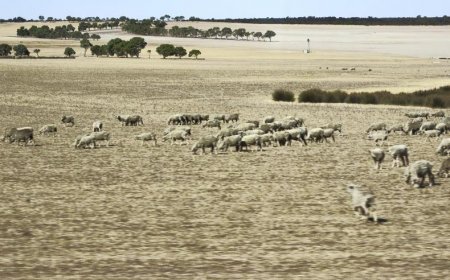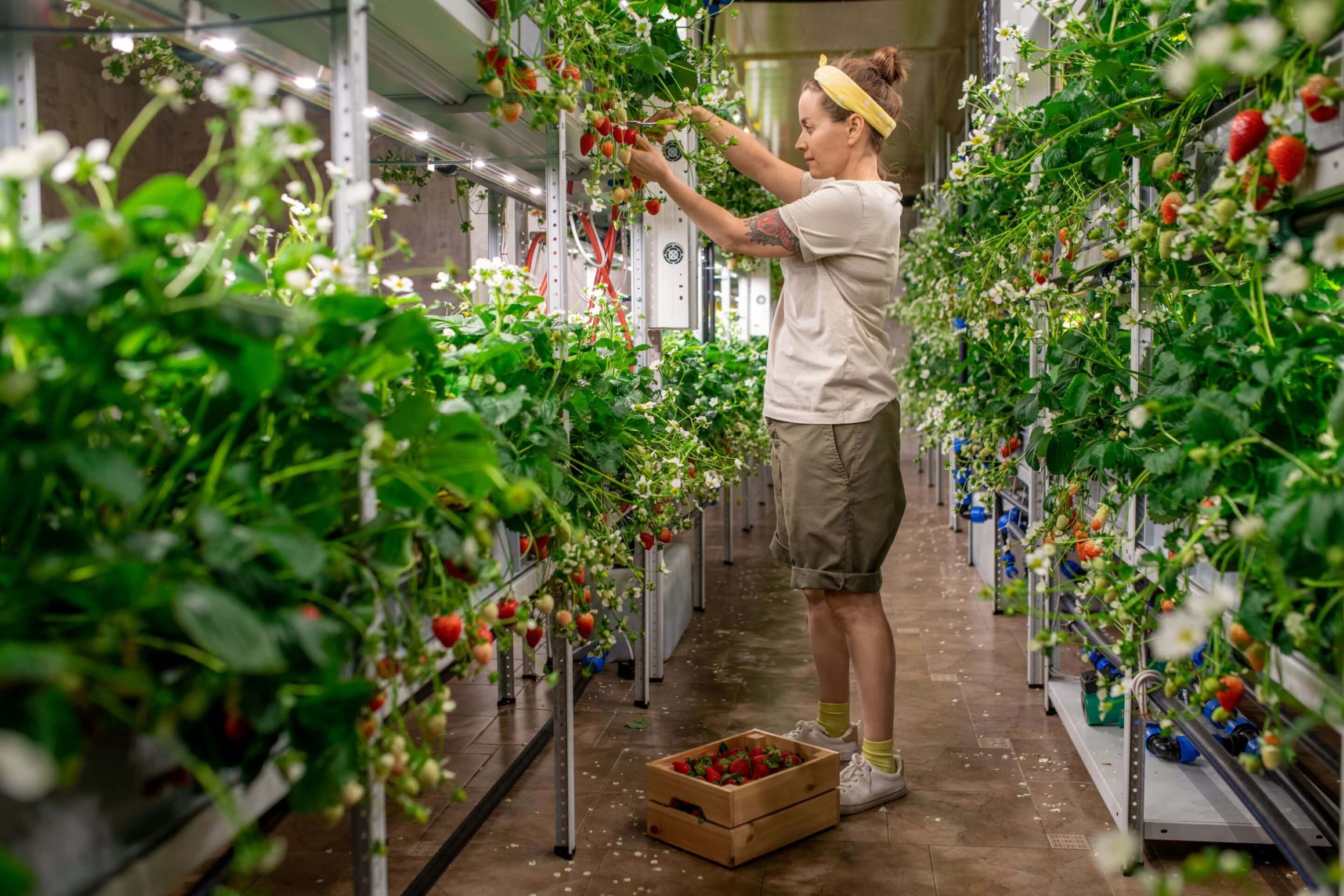Australia: Climate Action and Renewable Energy Goals
Discover how Australia is tackling climate change through bold climate action and ambitious renewable energy goals . Learn about its progress, challenges, and innovative solutions shaping a sustainable future.
Australia, a nation renowned for its breathtaking landscapes and diverse ecosystems, stands at a critical juncture in addressing one of the most pressing challenges of our time—climate change. As a country uniquely vulnerable to the impacts of global warming, including rising sea levels, prolonged droughts, and devastating bushfires, Australia has committed to ambitious climate action and renewable energy goals . These efforts aim not only to mitigate environmental damage but also to transition toward a sustainable, low-carbon future. In this article, we explore Australia’s strategies, achievements, and challenges in combating climate change while fostering renewable energy innovation.
Understanding Australia's Climate Vulnerability
Australia is no stranger to extreme weather events, many of which have been exacerbated by climate change. The country’s unique geography and biodiversity make it particularly susceptible to the adverse effects of a warming planet.
Rising Temperatures and Extreme Weather
Over the past century, Australia has experienced a significant increase in average temperatures, with 2019 being the hottest year on record. This warming trend has led to more frequent and severe heatwaves, droughts, and bushfires. The catastrophic 2019-2020 Black Summer bushfires, which burned over 18 million hectares of land, underscored the urgent need for effective climate action . These fires destroyed thousands of homes, killed or displaced an estimated three billion animals, and released vast amounts of carbon dioxide into the atmosphere, further accelerating climate change.
The frequency of extreme weather events has also intensified. Cyclones, floods, and storms are becoming more destructive, posing risks to infrastructure, agriculture, and human safety. For example, the 2022 floods in Queensland and New South Wales caused billions of dollars in damages, highlighting the economic toll of climate-related disasters.
Threats to Biodiversity
Australia is home to some of the world’s most unique flora and fauna, much of which is found nowhere else on Earth. However, climate change poses a grave threat to these ecosystems. Coral bleaching in the Great Barrier Reef, driven by warmer ocean temperatures, highlights the vulnerability of Australia’s natural treasures. Since the 1980s, the reef has experienced multiple mass bleaching events, with scientists warning that continued warming could lead to irreversible damage.
Terrestrial ecosystems are equally at risk. Rising temperatures and changing rainfall patterns are altering habitats, forcing species to migrate or face extinction. Iconic species like the koala, already under pressure from habitat loss, are now grappling with the added stressors of heatwaves and bushfires.
Economic Impacts
Climate change also has profound economic implications for Australia. Agriculture, tourism, and coastal infrastructure are all at risk due to changing weather patterns and rising sea levels. For example, prolonged droughts have reduced agricultural yields, impacting rural communities and food security. Similarly, the tourism industry, which relies heavily on natural attractions like the Great Barrier Reef and national parks, faces declining revenues as these sites degrade.
Coastal cities like Sydney and Melbourne are also vulnerable to sea-level rise, which threatens property values, transportation networks, and essential services. A 2021 report estimated that up to $63 billion worth of Australian infrastructure could be at risk by 2100 if current trends continue.
Australia’s Commitment to Climate Action
Recognizing the urgency of the climate crisis, Australia has set ambitious targets to reduce greenhouse gas emissions and transition to cleaner energy sources. These commitments reflect both domestic priorities and international obligations under agreements like the Paris Agreement.
Emissions Reduction Targets
Under the Paris Agreement, Australia pledged to reduce its greenhouse gas emissions by 43% below 2005 levels by 2030 . This target represents a significant step forward from earlier commitments and aligns with global efforts to limit global warming to 1.5°C above pre-industrial levels. Achieving this goal requires substantial reductions in emissions from key sectors such as energy, transport, and agriculture.
To meet its 2030 target, Australia is implementing policies like the Safeguard Mechanism , which sets emission limits for large industrial facilities, and incentives for businesses to adopt cleaner technologies. Additionally, the government has introduced measures to promote electric vehicles (EVs) and improve energy efficiency in buildings.
Net-Zero by 2050
In addition to its 2030 target, Australia has committed to achieving net-zero emissions by 2050 . This long-term goal requires substantial investment in renewable energy, carbon capture technologies, and sustainable practices across industries. The transition to net-zero will involve phasing out coal-fired power plants, electrifying transportation, and enhancing carbon sequestration through reforestation and soil management.
Critics argue that Australia’s net-zero plan lacks specificity and relies too heavily on unproven technologies like carbon capture and storage (CCS). Nevertheless, proponents believe that the commitment sends a strong signal to investors and other nations about Australia’s determination to address climate change.
State-Level Initiatives
While federal policies play a crucial role, state governments have also taken proactive steps. For instance, Victoria and South Australia have implemented aggressive renewable energy programs, aiming to source 50% or more of their electricity from renewables by 2030. Tasmania, already powered almost entirely by renewable energy, plans to become the first state in Australia to achieve 200% renewable energy generation by exporting surplus clean electricity to neighboring regions.
Renewable Energy Goals and Progress
Australia’s abundant natural resources, including sunshine and wind, position it as a leader in renewable energy adoption. The country has made significant strides in harnessing these resources to meet its energy needs sustainably.
Solar Power Leadership
Australia boasts some of the highest rates of rooftop solar panel installations globally. Over 30% of households now generate their own electricity through solar panels, reducing reliance on fossil fuels and lowering energy costs. Large-scale solar farms, such as the Bungala Solar Project in South Australia, further contribute to the nation’s renewable energy capacity. With over 275 megawatts (MW) of installed capacity, Bungala supplies clean energy to approximately 82,000 homes annually.
The growth of solar power has been driven by falling technology costs, favorable government incentives, and high electricity prices. Programs like the Small-scale Renewable Energy Scheme (SRES) provide rebates for residential solar installations, making them more accessible to homeowners.
Wind Energy Expansion
Wind power is another cornerstone of Australia’s renewable energy strategy. States like Tasmania and South Australia have invested heavily in wind farms, which now supply a significant portion of their electricity. The Hornsdale Wind Farm , operated by Tesla, includes the world’s largest lithium-ion battery, enhancing grid stability and reliability.
Offshore wind projects are also gaining traction. The proposed Star of the South offshore wind farm off the coast of Victoria aims to generate up to 2.2 gigawatts (GW) of electricity, enough to power 1.2 million homes. If approved, it would mark a major milestone in Australia’s renewable energy journey.
Hydrogen Innovation
Green hydrogen—a clean fuel produced using renewable energy—has emerged as a key focus area for Australia. The government has launched the National Hydrogen Strategy , aiming to establish Australia as a global leader in hydrogen production and export. This initiative could revolutionize industries like transportation and manufacturing while creating new economic opportunities.
Pilot projects are already underway. For example, the Western Green Energy Hub in Western Australia plans to produce green hydrogen using wind and solar power, with the potential to supply markets in Asia and Europe. By leveraging its abundant renewable resources, Australia hopes to capitalize on growing global demand for clean hydrogen.
Challenges in Achieving Climate Goals
Despite its progress, Australia faces several obstacles in meeting its climate action and renewable energy goals . Addressing these challenges is essential for ensuring the success of its sustainability agenda.
Political Resistance
Climate policy remains a contentious issue in Australian politics. While some political parties advocate for rapid decarbonization, others prioritize fossil fuel industries, citing economic concerns. This division often leads to inconsistent policies and delays in implementation. For example, debates over the closure of coal-fired power plants frequently stall legislative progress, leaving investors uncertain about the future regulatory landscape.
Fossil Fuel Dependence
Australia is one of the world’s largest exporters of coal and liquefied natural gas (LNG). Transitioning away from these industries poses significant economic and social challenges, particularly for regions reliant on mining jobs. Balancing economic growth with environmental responsibility remains a delicate task. Critics argue that continuing to approve new coal mines undermines Australia’s climate commitments and tarnishes its international reputation.
Infrastructure Gaps
The shift to renewable energy requires substantial upgrades to Australia’s energy infrastructure. Expanding transmission networks, integrating storage solutions, and modernizing the grid are essential but costly endeavors that demand coordinated planning and investment. For instance, remote renewable energy projects often face difficulties connecting to urban centers due to inadequate transmission lines.
Innovative Solutions Driving Change
To overcome these challenges, Australia is embracing innovative approaches that leverage technology, collaboration, and community engagement.
Indigenous-Led Conservation
Indigenous Australians have long practiced sustainable land management techniques that align with modern conservation principles. Programs like Indigenous Rangers empower Aboriginal communities to protect and restore ecosystems, contributing to biodiversity preservation and carbon sequestration. For example, traditional fire management practices in northern Australia have reduced greenhouse gas emissions while safeguarding wildlife habitats.
Corporate Sustainability Initiatives
Many Australian businesses are taking bold steps to reduce their carbon footprint. Companies like Atlassian and Woolworths have committed to achieving net-zero emissions, investing in renewable energy projects and adopting circular economy practices. Financial institutions are also playing a role; banks like ANZ and Commonwealth Bank have pledged to divest from fossil fuels and finance green initiatives instead.
Community Energy Projects
Grassroots initiatives are playing a vital role in driving the renewable energy transition. Community-owned solar farms and cooperatives allow local residents to invest in clean energy projects, fostering a sense of ownership and shared responsibility. The Totnes Renewable Energy Society (TRES) in Victoria exemplifies how small-scale projects can deliver tangible benefits, including reduced energy bills and increased resilience against price shocks.
Case Study: South Australia’s Renewable Energy Success
South Australia serves as a shining example of how determined policy and technological innovation can transform a region’s energy landscape. Once heavily reliant on coal-fired power plants, the state now generates over 70% of its electricity from renewable sources.
"South Australia’s journey demonstrates that a rapid transition to renewable energy is not only possible but also economically beneficial."
Key factors behind this success include strong government leadership, supportive regulatory frameworks, and public-private partnerships. The deployment of large-scale batteries, such as the Hornsdale Power Reserve, has addressed intermittency issues, making renewables a reliable alternative to fossil fuels. Additionally, the state’s commitment to offshore wind and green hydrogen projects positions it as a pioneer in emerging technologies.
Lessons Learned from Australia’s Climate Journey
Australia’s experience offers valuable insights into the complexities of implementing effective climate action and renewable energy goals .
Importance of Policy Consistency
Frequent changes in climate policy undermine investor confidence and slow progress. Establishing stable, long-term frameworks is crucial for driving sustained action.
Role of Public Awareness
Educating citizens about the benefits of renewable energy fosters broader support for climate initiatives. Campaigns highlighting cost savings, job creation, and environmental protection can galvanize public enthusiasm.
Need for International Collaboration
Climate change is a global challenge that requires collective action. By partnering with other nations, sharing technology, and participating in international forums, Australia can amplify its impact.
Tips for Accelerating Climate Action
- Invest in research and development of emerging technologies.
- Strengthen incentives for renewable energy adoption.
- Promote electric vehicle uptake through subsidies and charging infrastructure.
- Support reforestation and soil carbon sequestration projects.
- Encourage financial institutions to divest from fossil fuels.
Comparison Table: Renewable Energy Adoption Across States
Review: Verdict on Australia’s Climate Efforts
While Australia has made commendable progress in advancing climate action and renewable energy goals , significant work remains. By addressing existing barriers and scaling up successful initiatives, the country can position itself as a global leader in sustainability.
Conclusion
Australia’s journey toward a sustainable future is both challenging and inspiring. Through bold policies, innovative solutions, and collaborative efforts, the nation is charting a path toward a cleaner, greener tomorrow. As the world grapples with the realities of climate change, Australia’s experiences offer valuable lessons for other nations striving to balance environmental stewardship with economic prosperity.
Frequently Asked Questions (FAQs)
-
What are Australia’s main climate vulnerabilities?
Rising temperatures, extreme weather, and threats to biodiversity are key concerns. -
What is Australia’s emissions reduction target?
Australia aims to cut emissions by 43% below 2005 levels by 2030. -
Which renewable energy source dominates in Australia?
Solar power leads due to abundant sunshine and widespread rooftop installations. -
How does green hydrogen benefit Australia?
It supports decarbonization and creates export opportunities. -
Why is South Australia a renewable energy leader?
Strong policies and investments in wind and solar have transformed its energy mix. -
What challenges hinder Australia’s climate goals?
Political resistance, fossil fuel dependence, and infrastructure gaps are major hurdles. -
How do Indigenous practices aid conservation?
Traditional land management techniques enhance biodiversity and carbon storage. -
What role do corporations play in climate action?
Many companies are adopting net-zero targets and investing in renewables. -
How can individuals contribute to climate efforts?
Adopting energy-efficient practices and supporting renewable projects make a difference. -
What is Australia’s vision for 2050?
Achieving net-zero emissions and becoming a global leader in clean energy.
What's Your Reaction?
 Like
0
Like
0
 Dislike
0
Dislike
0
 Love
0
Love
0
 Funny
0
Funny
0
 Angry
0
Angry
0
 Sad
0
Sad
0
 Wow
0
Wow
0


